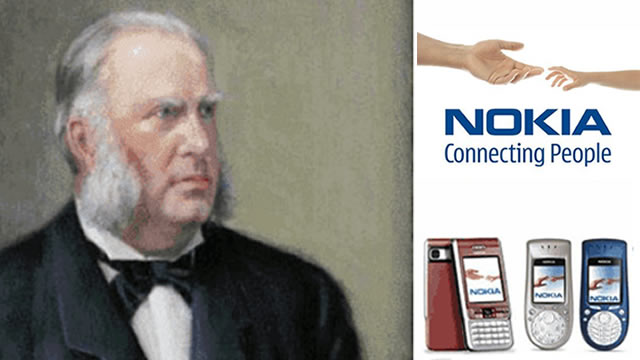Known as the founder of Nokia: Who is Fredrik Idestam?
Nokia is a company founded in Finland in 1865. The founder of Nokia is Fredrik Idestam. At that time, the company was producing bark and paper for paper mills. However, Nokia expanded into different sectors over time.

Fredrik Idestam (28 October 1838, Tyrväntö, Finland, Russia - 8 April 1916 Helsinki, Finland, Russia) was a Finnish mining engineer and businessman.
He is best known as the founder of Nokia.
In May 1865, he received permission to make weather vanes in Tampere, Finland. The weather vane began operating in 1866. In 1871, he founded the Nokia company with Leo Mechelin and moved the company's headquarters to Nokia, Finland.
Knut Fredrik Idestam (28 October 1838, Tyrväntö, Grand Duchy of Finland – 8 April 1916, Helsinki, Grand Duchy of Finland) was a Finnish mining engineer and businessman, best known as a founder of Nokia. In May 1865, Idestam obtained a permit to construct a groundwood paper mill at Tampere, Finland. The mill began operations in 1866. In 1871, Idestam and Leo Mechelin founded Nokia Ltd. and moved the company's operations to the city of Nokia, Finland.
Idestam retired in 1896.
About Nokia
Nokia is a company founded in Finland in 1865. The founder of Nokia is Fredrik Idestam. At that time, the company was producing bark and paper for paper mills. However, over time, Nokia expanded into different sectors and became a globally recognized company, especially in areas such as telecommunications equipment and mobile phones.
Nokia's mobile phones were very popular for many years and gave many people their first mobile phone experience. Nokia's history in telecommunications and its influence in the technology sector is quite significant.
Finnish Rubber Works Ltd was established elsewhere in 1898 and Finnish Cable Works began operations in 1912. Ownership of these two companies and Nokia gradually passed into the hands of a few people. Finally, in 1967, the three companies merged to become the Nokia Corporation.
In the early 1980s, Nokia strengthened its position in the telecommunications and consumer electronics market by acquiring Mobira, Salora, and Televa Luxor from Sweden.
In 1987, Nokia acquired the consumer electronics business and part of the parts manufacturing business of German Standard Electric Lorenz and the French consumer electronics company Oceanic. In 1987, Nokia also acquired the Swiss cable machinery company Maillefer.
In the late 1980s, Nokia acquired Ericsson's data systems division, becoming the largest information technology company in Scandinavia. In 1989, Nokia opened the cable industry to Continental Europe by purchasing the Dutch cable company NKF.
Since the early 1990s, Nokia has been concentrating on its core business, telecommunications, by separating its information technology and core industrial activities.
Nokia and Siemens decided to merge on the basis of the phone parts unit, with a 50 percent partnership, and it was stated that the name of the new company would be Nokia Siemens Network. Nokia closed its last factory in Finland on July 1, 2012.
On February 11, 2011, it announced that it would use the Windows Phone operating system on its smartphones together with Microsoft.
The company, which faced financial difficulties and belt-tightening due to falling behind in the smartphone market compared to its competitors in 2012, sees the Microsoft operating system smartphones to be released in the last quarter of 2012 as its debut product and determines its strategies according to this product range.
On September 3, 2013, Microsoft's Devices and Services divisions and some Nokia patents were acquired for $7.2 Billion.
